Chapter: Analog and Digital Communication
Cyclic codes, Error Control Coding
CYCLIC
CODES:
In coding theory, cyclic codes are linear block error-correcting codes that have
convenient algebraic structures for efficient
error detection and correction.
Let
C be a linear code over a finite field GF(q)n of block length n.
C is called a cyclic code, if for every codeword c=(c1,...,cn)
from C, the word (cn,c1,...,cn-1)
in GF(q)n obtained by a cyclic right shift of components is again a
codeword. Same goes for left shifts. One right shift is equal to n −1
left shifts and vice versa. Therefore the linear code C is cyclic precisely
when it is invariant under all cyclic shifts.
Cyclic
Codes have some additional structural constraint on the codes. They are based
on Galois fields and because of their structural properties they are very
useful for error controls. Their structure is strongly related to Galois fields
because of which the encoding and decoding algorithms for cyclic codes are
computationally efficient.
Cyclic code for
correcting error:
a) For correcting
single error
The
cyclic codes explicitly with error
detection and correction. Cyclic codes can be used to correct errors, like Hamming codes as a cyclic codes can be used
for correcting single error. Likewise, they are also used to correct double
errors and burst errors. All types of error corrections are covered briefly in
the further subsections.
The
Hamming code has a generator polynomial
g(x)=x3+x+1. This polynomial has a zero in Galois extension field GF(8) at the primitive
element a,
and all codewords satisfy .
C(a)=0 Cyclic codes can also be used to correct double
errors over the field GF(2). Blocklength will be n equal to 2m-1 and
primitive elements a and
a3 as zeros in the GF(2m)
because we are considering the case of two errors here, so each will represent
one error.The received word is a polynomial of degree n-1 given as

where e(x) can have at
most two nonzero coefficients corresponding to 2 errors.
Syndrome Polynomial, S(x)
as the remainder of polynomial v(x) when divided by the
generator polynomial
g(x) i.e.
S(x)=v(x)
mod g(x)= (a(x)g(x)+e(x)) mod g(x)=e(x) mod g(x) as (a(x)g(x)) mod g(x) is zero
b) For correcting two
errors
Let the field elements
X1and X2 be the two error location numbers. If only one
error occurs then
X2
is
equal to zero and if none occurs both are zero.

And these two can be
considered as two pair of equations in GF(2m) with
two unknowns and
hence we can write

Hence
if the two pair of nonlinear equations can be solved cyclic codes can used to
correct two errors.
Syndrome Calculator
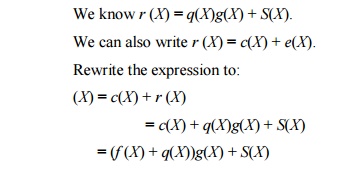
If
error polynomial e(X) is divided by generator polynomial g(X),
the remainder is the syndrome polynomial S(X).
Error Detection

Investigate
error detecting capability of cyclic code:
Assuming
e(X) is a burst of length n - k or less, i.e., errors are
confined to n - k or fewer consecutive positions;
e(X)
can be expressed by e(X) = XjB(X), here B(X)
is a polynomial of degree n –k –1 or less;
Xj
cannot
divided by g(X), B(X) cannot divided by g(X)
neither, e(X) = XjjB(X) is NOT divisible
by g(X);
Thus the syndrome
polynomial is not equal to zero.
It
means that a cyclic code Ccyc (n,k) can detect any error burst of
length n - k or less. A cyclic code Ccyc (n; k) can also
detect all the end-around error bursts of length n - k or less.
e =
(1 1 0 0 0 0 0 0 1 0 1)
Cyclic Redundancy Check
(CRC) codes:
Cyclic
redundancy .check codes are extremely well suited for "error
detection". The two important reasons for this statement are,
(1)
they can be designed to detect many
combinations of likely errors.
(2) The
implementation of both encoding and error detecting circuits is practical.
Accordingly, all error
detecting codes used in practice, virtually, are of theCRC -type. In ann-bit received word if a contiguous
sequence of ‗b-bits‘ in which the first and the last bits and any number of intermediate bits are received
in error, then we say aCRC "error burst' of length has occurred. Such an
error burst may also include an end-shifted version of the contiguous sequence.
In any event, Binary
(n, k)CRC codes are capable of detecting the following error patterns:
1. All CRC error bursts
of length (n-k) or less.
2. A fraction of (1 - 2
(n –k - 1)) of CRC error bursts of length (n – k + 1 ).
3. A fraction (1-2(n –
k)) of CRC error bursts of length greater than (n – k + 1 ).
4. All combinations of
(d min – 1 ) or fewer errors.
5.
All error patterns with an odd number of errors if the generator polynomial g
(X) has an even number of non zero coefficients.
Generator
polynomials of three CRC codes, internationally accepted as standards are
listed below.
All three contain (1
+X) as a prime factor. TheCRC-12 code is used when the character lengths is
6- bits. The others are
used for 8-bit characters.
* CRC-12 code: g (X) =
1 + X + X2+X3+ X11 + X12*
*CRC-16 code: g (X) = 1
+X2+ X15 + X16
*CRC-CCITT code: g (X)
= 1 + X5+ x12+ X26 .
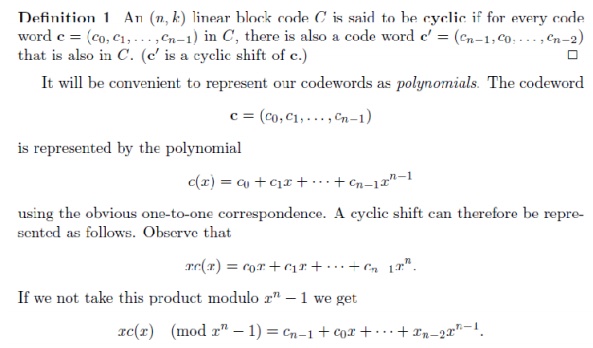
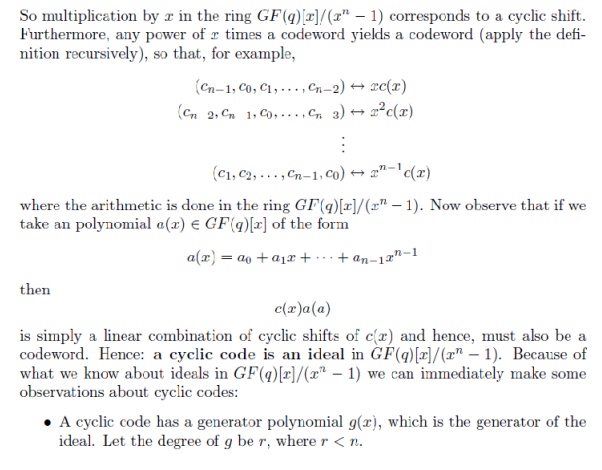
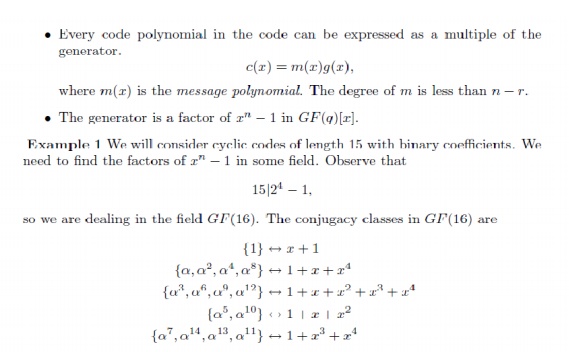
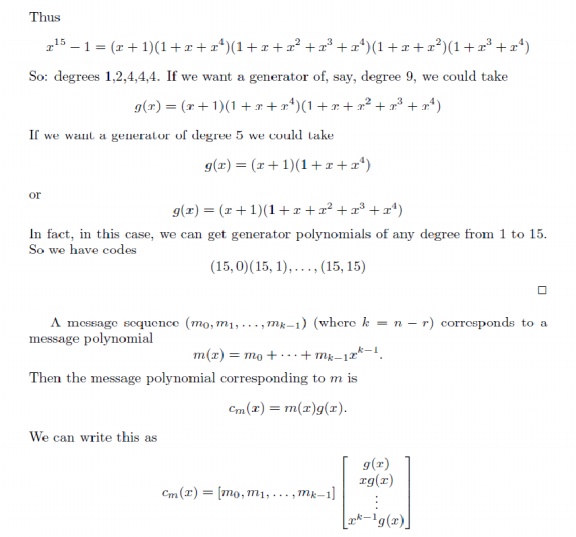
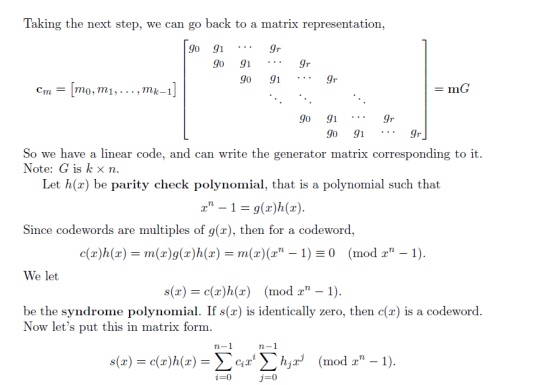
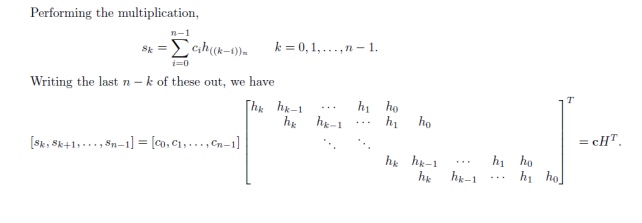
Related Topics